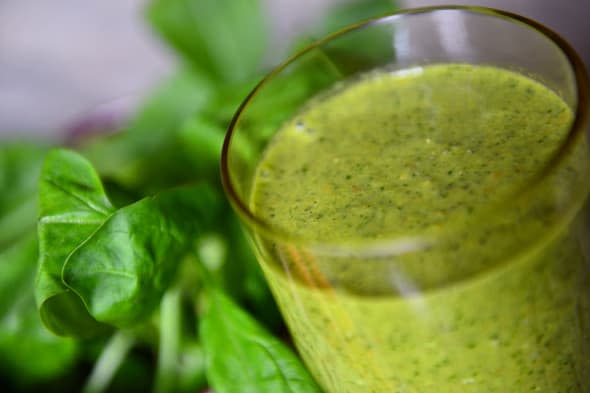The raw food diet - is it for you?

Pic: Shutterstock / Doorq
The raw food diet has been around for some time now, and there are many advocates who swear by this supposedly energising eating regime. So just what are the upsides and downsides of eating this way?
Related Searches
How does it work?
The staples of the raw food diet are fruits, vegetables, nuts, seeds and sprouted grains, with 'raw foodists' using these as 75 per cent of their daily intake. The key is to eat them, as much as possible, as nature intended - uncooked, unprocessed, and preferably organic. Juicing and blending will help to change up your meals if you are struggling with simple raw foods. Some eateries have also introduced natural products that make things easier for those on the go. Pret A Manger, for example, now offers a range of freshly pressed juices and smoothies, and even snack bars and vegetable crisps for a healthy snack.
The theory behind the method is that heating food to beyond 115-118 degrees Farenheit (or 42 degrees Centigrade) destroys many of the fabulous, healthy, naturally occurring nutrients and enzymes (which help you to digest food). It is also thought to change the pH balance of food, making it more acidic and thereby making the body more susceptible to illness.
What are the benefits?
The big plus with the raw food diet is that the majority of your kitchen staples will be high in vitamins, minerals, fibre and phytochemicals, all of which help the body to function properly. It is also true that B and C vitamins can be lost during the cooking process, so there is some method to what you imagine is the raw madness.
Furthermore, you will almost certainly feel the benefit of eating fresh foods and ditching the processed nasties, which are often high in calories, fat, and sodium. Most of those who try the diet find that they lose weight, and some claim that it has provided them with more energy, clearer skin, an improved immune system, and an end to headaches and allergies.
What are the downsides?
Though a raw food diet means you'll be getting a vitamin and mineral boost in much of what you eat, there are other essentials to consider, such as protein, iron and calcium. Without animal products in the diet, it is very important that you get these substances by other means - calcium from foods such as sesame seeds, almonds, broccoli, cabbage and kale, and iron from spinach and other greens, as well as raisins, apricots, sunflower and pumpkin seeds. Nuts and seeds also provide non-animal protein. You still may need the added help of vitamin supplements to fill the gaps though.
While eating raw foods helps to keep in some of those nutrients, others can be boosted during the cooking process, notably betacarotene and lycopene. And lastly, leaving improvements in food safety and refrigeration aside, cooking kills bacteria, helping to prevent food poisoning.
%VIRTUAL-AFCSponserAds%
Is it for you?
The basic premise behind the raw food diet is certainly viable, and there are benefits to be had with all those extra nutrients you'll be getting. However, as with all diets, cutting out whole food groups can cause problems if you're not careful so it's important to do your homework if you plan on going down a totally raw food route. On the other hand, simply upping your raw food intake may have some impact on your health, so if you can't face an all raw diet, try adding more of the good stuff to your day-to-day eating regime.
Have you tried the raw food diet? Tell us about your experience below...




